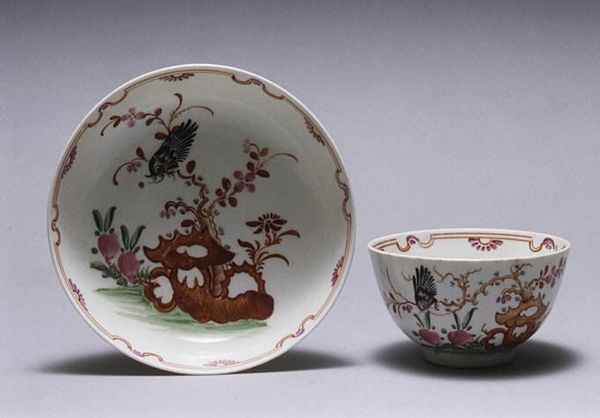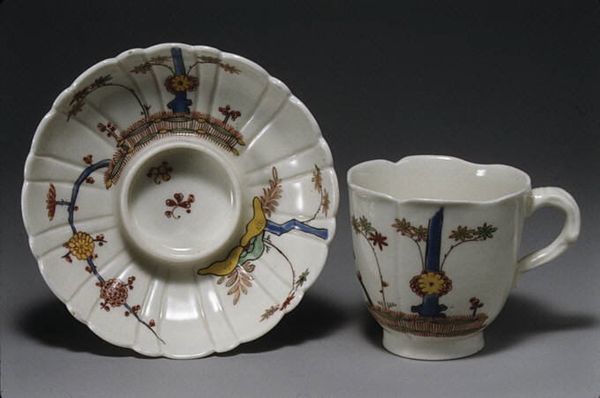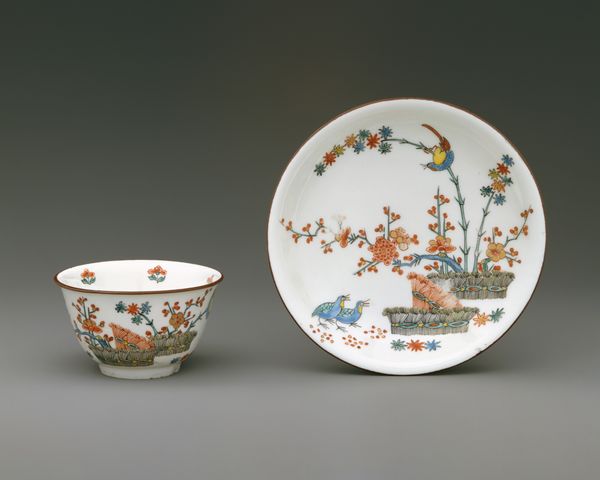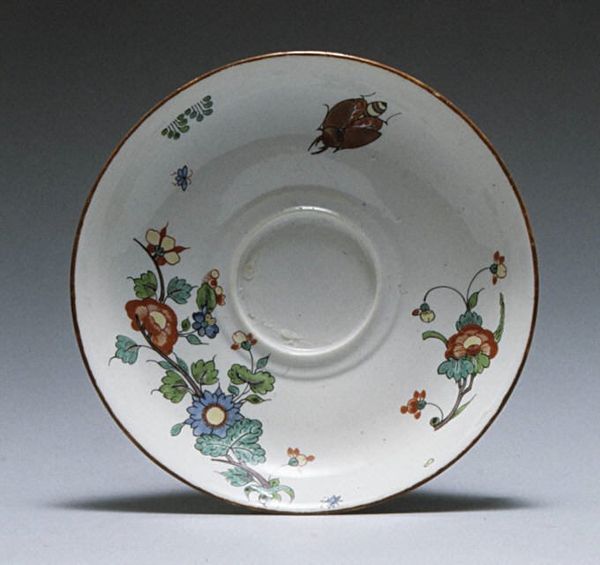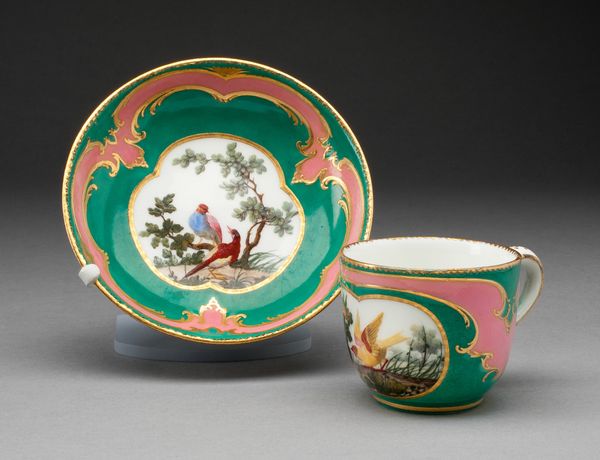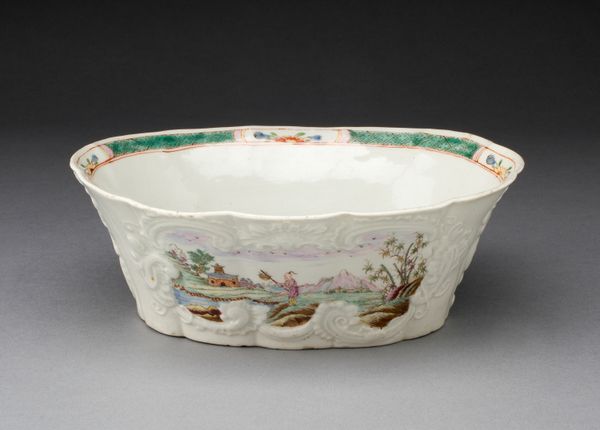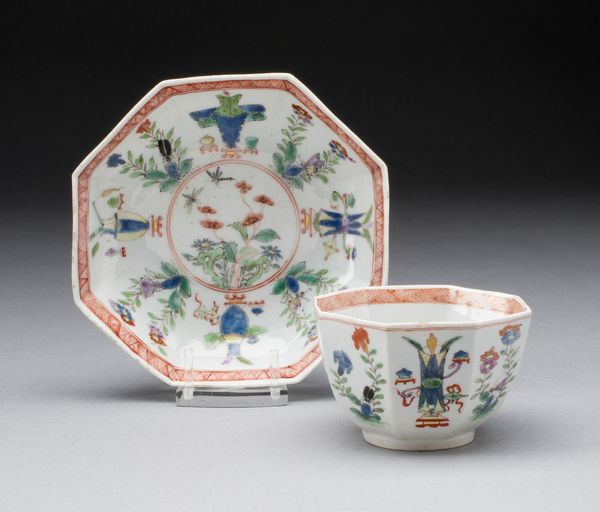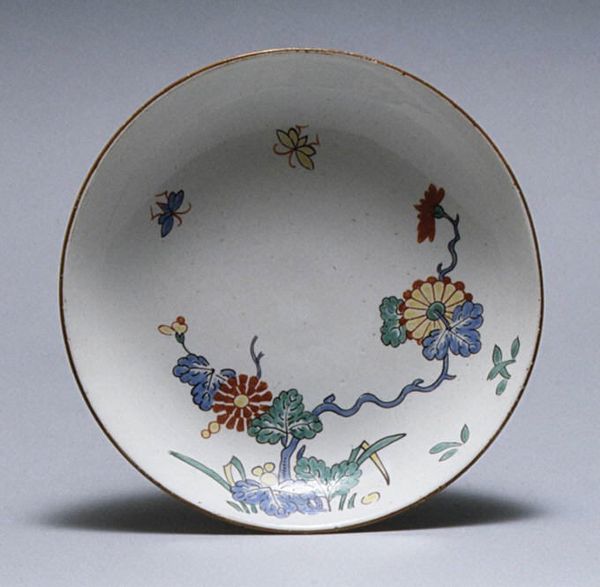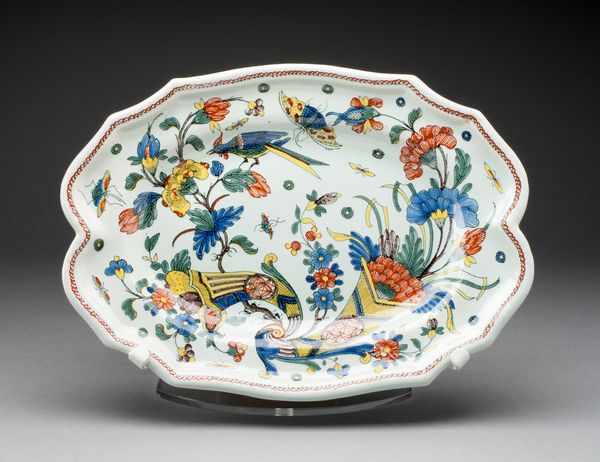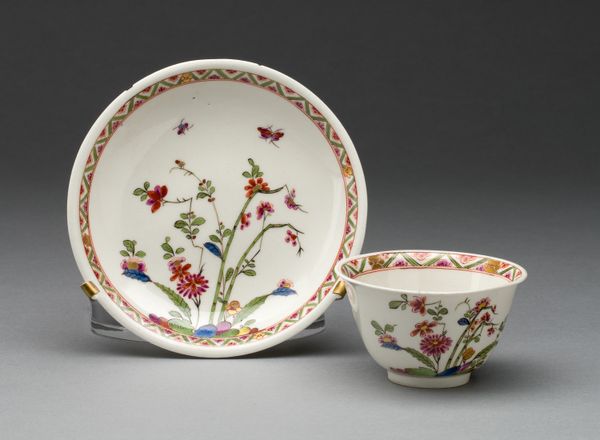
ceramic, porcelain
#
asian-art
#
ceramic
#
flower
#
porcelain
#
ceramic
#
decorative-art
Dimensions: Height (teabowl .142): 2 in. (5.1 cm); Diameter (saucer .143): 5 1/16 in. (12.9 cm)
Copyright: Public Domain
This teabowl and saucer were made at the Meissen Manufactory, where the secrets of hard-paste porcelain were first unlocked in Europe. Porcelain is a high-fired ceramic, known for its whiteness and translucency. The painting on these pieces is a clue to its story. With its delicate scenes in the Chinese style, this tea set exemplifies the fashion for what was then called chinoiserie. Notice that the rendering isn't quite right – like a Westerner's best guess at what Chinese art might look like. But what this tea set really represents is a global trade imbalance, with Europeans hooked on Chinese porcelain and tea, but having little to offer in return. The alchemist Johann Friedrich Böttger was essentially tasked by his patron, Augustus the Strong, to create a local version of porcelain. In doing so, he helped to level the playing field economically, enabling the production of wares like these, made for a rising class of consumers. So, next time you have a cup of tea, consider the material culture and the global economy, two things that are always in the mix.
Comments
No comments
Be the first to comment and join the conversation on the ultimate creative platform.
